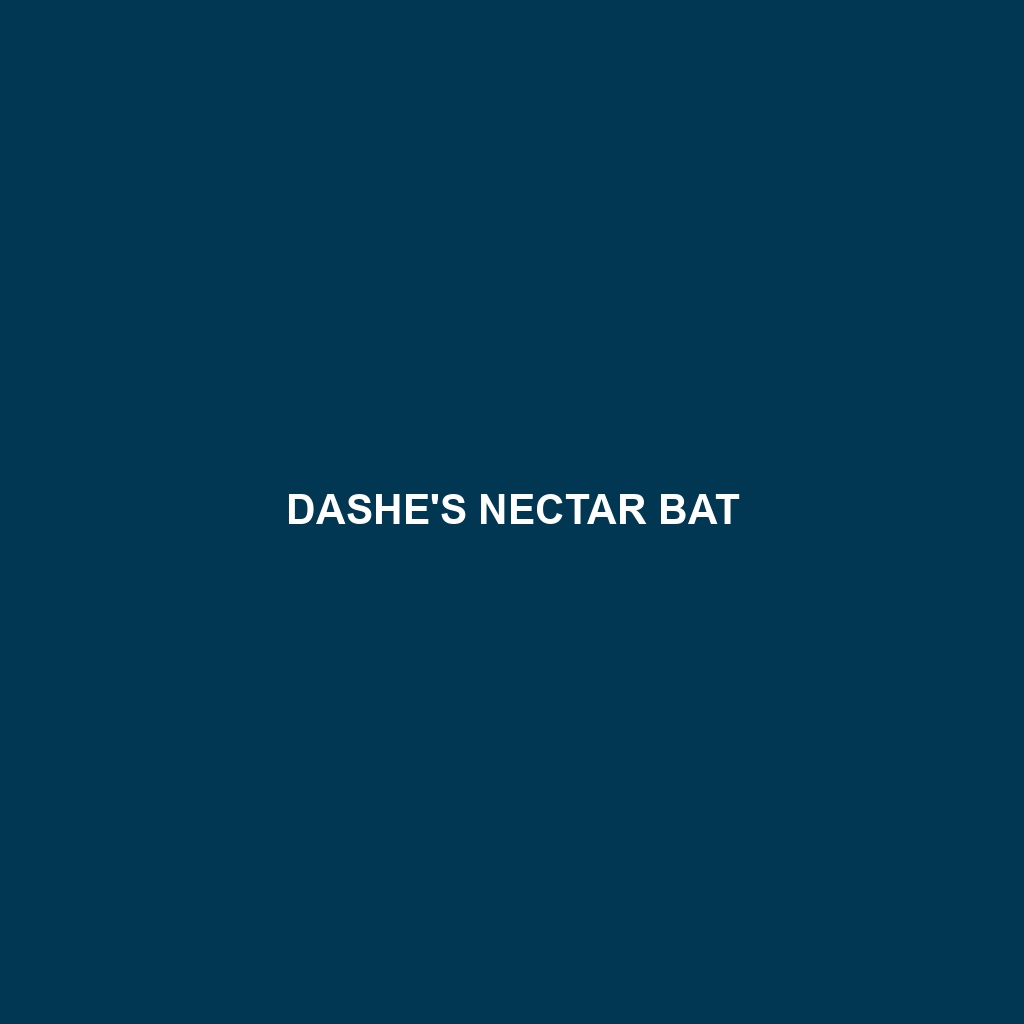Cadena’s Nectar Bat
Common Name: Cadena’s Nectar Bat
Scientific Name: Lonchophylla cadenae
Habitat
Cadena’s Nectar Bat is primarily found in the tropical and subtropical forests of Central and South America, particularly in regions of Colombia and Ecuador. These bats thrive in humid environments, often residing in areas rich in flowering plants, which provide essential nectar resources. Their preferred habitats include montane forests and lowland rainforests, where a diverse range of plant species coexists.
Physical Characteristics
Cadena’s Nectar Bat is a small-sized bat, typically measuring between 6 to 10 cm in body length with a wingspan of approximately 30 cm. They are characterized by their vibrant fur, which varies in color from light brown to grayish hues, allowing for effective camouflage among leaves and branches. One distinctive feature includes their elongated snout, which is adapted for feeding on nectar and enhances their foraging abilities.
Behavior
These bats exhibit nocturnal behavior, primarily emerging at dusk and dawn to forage for nectar. Cadena’s Nectar Bats are known for their agility in flight, allowing them to navigate through dense vegetation. They play a significant role in pollination, frequently visiting various flowering plants and transferring pollen in the process. Their social structure is relatively solitary, though they may be found roosting in small groups during the daytime.
Diet
The primary diet of the Cadena’s Nectar Bat consists of nectar from various flowering plants, making them important pollinators in their ecosystems. They also consume soft fruits and occasionally insects. Their specialized feeding habits involve hovering in front of flowers, using their long tongues to extract nectar efficiently. This dietary preference links them closely with the reproductive success of numerous plant species.
Reproduction
Cadena’s Nectar Bat typically breeds during the wet season, coinciding with the peak availability of flowering plants. Females usually give birth to a single offspring per breeding season, which remains dependent on its mother for several weeks. The bonding period between mother and offspring is crucial for the pup’s development and survival, as it learns essential foraging skills and navigation techniques.
Conservation Status
Currently, the Cadena’s Nectar Bat is classified as Vulnerable according to the IUCN Red List. Habitat loss due to deforestation and agricultural conversion poses significant threats to their populations. Conservation efforts are focused on habitat protection and restoration to ensure the survival of this valuable bat species.
Interesting Facts
– Cadena’s Nectar Bat is named in honor of Colombian scientist Carlos Cadena, who contributed significantly to bat research.
– They can visit up to 50 flowers in a single night, showcasing their critical role in plant pollination.
Role in Ecosystem
Cadena’s Nectar Bat plays an integral role in its ecosystem as a pollinator. By transferring pollen from one flower to another, they help in the reproduction of various plant species, which in turn supports the habitat’s biodiversity. Their interactions with flora not only enhance plant growth but also provide food resources for other wildlife, reinforcing their importance within the ecological balance.
